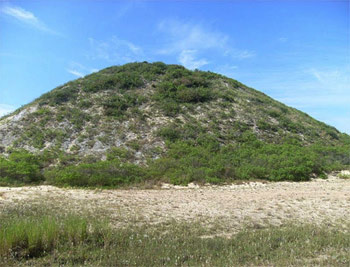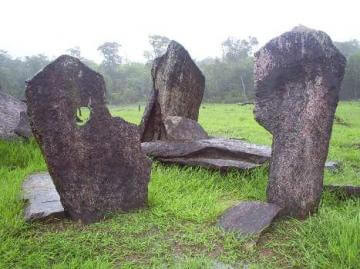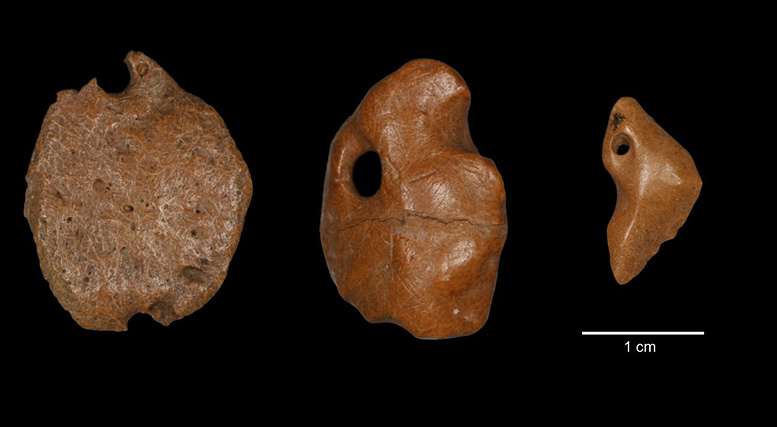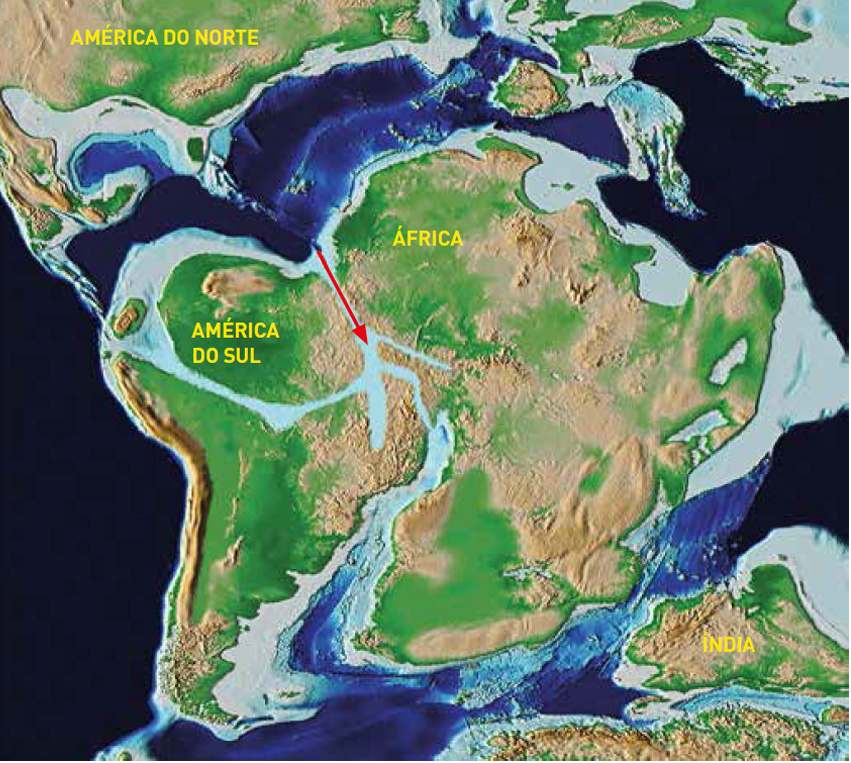World's oldest pyramids are discovered

Parque Arqueológico do Solstício

The Parque Arqueológico do Solstício (Solstice Archaeological Park) is an archaeological site located in Amapá state in the north of Brazil near the city of Calçoene. The site contains a pre-Colombian megalithic stone circle, colloquially known as the "Amazon Stonehenge."
The megalithic site consists of 127 blocks of granite, each up to 13 feet or 4 meters tall, standing upright in a circle measuring over 98 feet or 30 meters in diameter. It 's located on a hilltop on the bank of the Rego Grande river.
Around this megalithic monument, there are burial sites that demonstrate complex rituals with funerary pits. After conducting radiocarbon testing and carrying out measurements during the winter solstice at the Rego Grande site, scholars in the field of archaeoastronomy determined that an indigenous culture arranged the megaliths into an astronomical observatory between 1,000 - 2,000 years ago or at least 5 centuries before the European conquest of the Americas began.
Archaeologists theorize that the site was built by indigenous peoples for astronomical, ceremonial or burial purposes and likely a combination. The function of this archaeo-astronomical site is unknown much like other sites such as Stonehenge, a much older site in Great Britain.
Since the end of the 19th century, scientists have studied these complex societies in the Amazon Basin. Other megalithic structures have been found in this part of the Amazon, including French Guyana.
Evidence has been found near the Rego Grande site and all over the Amazon to suggest that the indigenous people of the region lived in complex societies that involved both agriculture and a close relationship with the natural environment around them.
The Government of Amapá intends to create a state park to preserve the site which will have infrastructure for visitors and a museum. It 's located 4.3 miles or 7 kilometers from the municipal seat of Calçoene and 238 miles or 384 kilometers from Macapá.
The remains of the now-extinct giant sloth were discovered at the Santa Elina rock shelter in Brazil, and they included thousands of osteoderms — hard bony deposits that form within the skin of certain animals.


In the Midwest there are 2,741 archaeological sites, among them some that indicate human presence in the region 25,000 years ago. The Goiás sites stand out for their caves with paintings and engravings, such as those in Serranópolis, and the sites of large villages, camps, cemeteries and lithic workshops that prove the indigenous presence in the territory. In Mato Grosso there is the second oldest site in Brazil, the Santa Elina Archaeological Site, in Serra das Araras, in the municipality of Jangada. There, research has proven human presence over 25,000 years ago and the bones of a giant sloth, extinct for 10,000 years, were found.
The oldest prehistoric records in the country are among those registered in Mato Grosso do Sul, and indicate the presence of groups of potters and horticulturists. The State is also home to the Bodoquena-Pantanal Geopark, created by State Decree No. 12,897, of December 22, 2009 and is awaiting recognition by the United Nations Educational, Scientific and Cultural Organization (Unesco). The Federal District has archaeological sites that present a diversity of lithic sites (places used by man to manufacture objects in stone), ceramics, rock art, cemeteries and the colonial period.
In Rio Grande do Norte there is a considerable amount of archaeological sites. On the coast surface sites predominate and inland there is a large amount of rock art. The Superintendence promoted the socialization of the Xique-Xique I and II sites, and three other sites are being prepared to receive visitors, with the implementation of walkways and Heritage Education actions. Until December 2014, 299 sites were registered in the State.
Paraná has 1304 archaeological sites registered by Iphan. Lithic hunter-gatherer sites date back approximately 8,000 years; ceramics from horticulturists and potters are 2,000 years old. There are shell mounds, cave paintings and inscriptions, as well as historic sites registered from the 16th century onwards, such as the Jesuit reductions of Nossa Senhora de Loreto and Santo Inácio Mini and the Spanish cities Ciudad Real del Guairá and Villa Rica del' Espiritu Santo I and II; and the historic paths of Graciosa, Itupava and Arraial, which connected the coast to the Curitiba plateau.
Cave paintings were identified in Guarçouba Bay and Caminho das Tropas. Work to save and rescue the Archaeological Heritage in areas impacted by the construction of the Itaipu Hydroelectric Power Plant began in the 1970s, with the Itaipu Archaeological Project, one of the pioneers in Brazil. Since then, Iphan has monitored the works of power plants and small hydroelectric power stations, due to the large number of plateau rivers characteristic of Paraná's geography, managing this heritage.
The archaeological heritage of Amazonas is characterized by the high incidence of sites, composing a heritage map marked by the great density and variability in its archaeological records. It is known that the Amazonian occupations date back to approximately 8,000 years before the present and that between 3,000 and 2,000 years ago, sites emerged that present large extensions of the so-called "terra preta de Índio", where ceramic artifacts of rare beauty can be found, indicating that complex societies were developing in the region.
Another important contribution of archaeological research refers to the analysis of the Amazonian landscape and its correlation with the management of plant species by past populations. The results of the investigations carried out have pointed to the fall of the myth of the untouched forest and indicated that the more one understands the configuration of the tropical forest, the clearer it is that much of what is observed is the result of the intense human occupation of the area by pre-colonial populations.